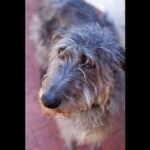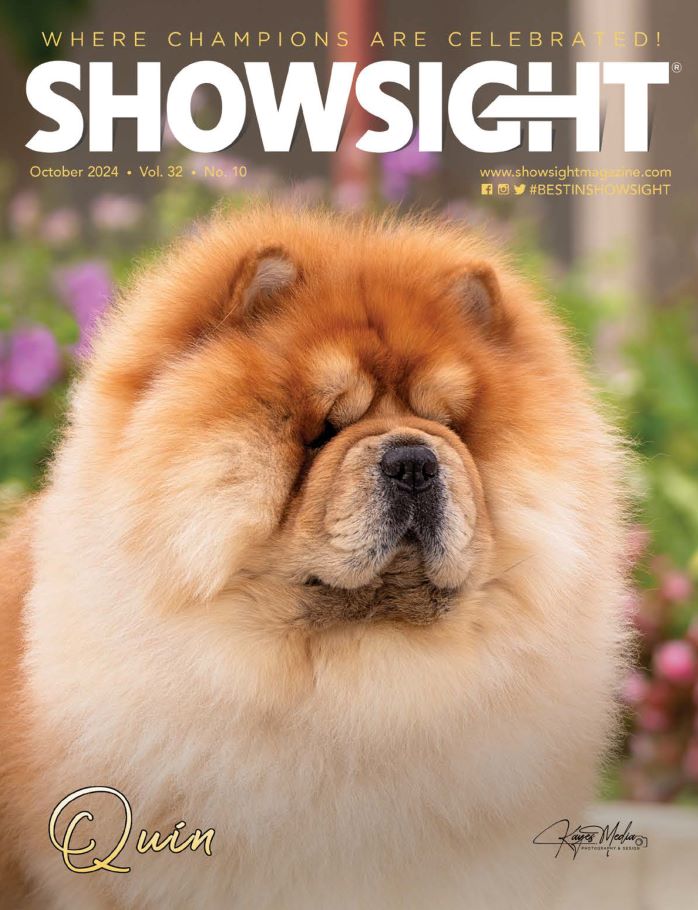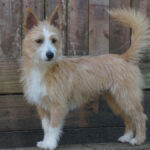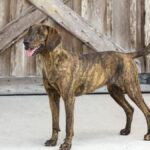This article was originally published in Showsight Magazine, October 2013 issue.
Judging the Portuguese Podengo Pequeno
The standard for any breed is the written description of the ideal specimen of that breed. The standard of the Portuguese Podengo Pequeno depicts a dog of moderation that has the requisite bone, muscle, body proportions, and angles to complete the job it was developed to do: hunt its prey, the European rabbit or common rabbit (Oryctolagus cuniculus), over uneven terrain, through thick cover, and underbrush to provide meat for Portuguese farmers and hunters.
It is important to keep that function in mind when judging this breed. It is not a toy breed, lapdog, or terrier but a highly effective hunter developed to efficiently get the job done. The Podengo Pequeno is considered a primitive breed, meaning it uses sight, scent, and hearing while hunting. Ranging in height from 8 to 12 inches at the shoulder, the shorter dogs are used to get into tight crevices to drag the prey out of hiding or bolt the rabbit so that the larger dogs can run them down and complete the hunt.
Being the shortest of the “sighthounds,” the Podengo Pequeno obviously relies on its acute sense of hearing and highly developed sense of smell to locate the quarry. Once sighted, it courses the game and dispatches it, demonstrating agility and impressive maneuverability to stay with the rabbit, turn quickly, and use its speed to run down the quarry. The Podengo Pequenos were bred to hunt for hours each day, starting early in the morning, breaking during the heat of the day, and resuming the hunt in late afternoon. They often hunt for several consecutive days. TYPE is the most important aspect in judging this breed. It is the only primitive breed with a RECTANGULAR body outline.
Notes on the Standard:
Size and Proportions
The standard calls for proper PROPORTIONS: a one-to-one ratio [1:1] of body depth, measured from the top of the withers to the bottom of the chest, to leg length, measured from elbow to the ground. Being too leggy or too short on leg results from an improper 1:1 ratio of body depth to leg length.
The LENGTH of body is 20% or 1/5th LONGER [5:6 ratio—height to length] than the TOTAL HEIGHT of the dog (distance from the top of the withers to the ground).
Body Proportions
Body length is measured from the point of the shoulder to the pin bone. Therefore, a 10-inch high dog should be 12 inches long. It is essential to have the required proportions for the Podengo Pequeno to function properly while hunting over irregular and rocky terrain. Without that added length, the dog cannot maintain speed or make the rapid changes in direction necessary to catch the elusive rabbit.
The body proportions of the Podengo Pequeno were developed over time through result-based breeding to create the efficient hunter we know today. Correct proportions are necessary for the correct Podengo Pequeno type!
When confronted with two specimens—one approaching square and the other longer than the required 20%, with all other parameters equal—you should choose the longer dog if the additional length isn’t so extreme that it hampers the dog’s proper functioning.
Body height is between 8 to 12 inches. Look for the most balanced dog with correct Podengo Pequeno type within this range. Occasionally, you may find a dog of larger size. The judge must then weigh the need for correct type within the size range.
It is better to have a slightly oversized dog that is balanced than one that is within the size range but lacks the correct proportions and therefore does not possess the correct Podengo Pequeno type. Common sense should be employed in not awarding an excessively oversized dog.
Head
The head is wedge-shaped when viewed from the side and from above, resembling a four-sided pyramid. It is broader through the back skull and narrows towards the nose. The muzzle is wide at its attachment to the skull, narrowing to the nostrils, shorter than the back skull, and slightly down-faced.
The head has a curved appearance when viewed from above, with prominent brow bones. The eyes are small, almond-shaped, set obliquely, and can be honey to dark brown in color. The ears are broad-based, triangular in shape, thin, taller than their width, and set obliquely at the level of the eye.
The skull is relatively flat between the ears. The under jaw is strong with clean musculature and not cheeky. The nose is black or darker than the coat, prominent at the tip. The lips are close-fitting, thin, and pigmented. The bite is scissor with normal occlusion of both jaws.
Neck, Topline, and Body
The neck is moderately long, strong, and muscular, with a slight arch and no dewlap. It blends smoothly into a level topline, with the withers only slightly visible. The back is straight and long, while the loin is level, broad, and well-muscled. The croup is level to slightly sloping and of medium width. The ribcage is slightly sprung, with a moderate fore chest. The underline features a lean belly with a slight tuck-up.
Tail
The tail is medium high set, medium length, strong, thick, and tapered with a feathered underside. At rest, it falls curved and reaches the hock. On the move, it is carried either horizontal with a slight curve or vertical in the shape of a sickle.
Forequarters
The forequarters have moderate shoulder angulation. There is a moderate layback of the shoulder blade (scapula) and a moderate return of the upper arm (humerus). The elbows are tucked in, with the forearm being straight, long, and muscular. The pastern is short, strong, and slightly sloping. The feet are oval-shaped (think Teaspoon), strong, with slightly arched toes, tough pads, and strong nails.
Hindquarters
The hindquarters have moderate angulation. They are well-muscled and lean, with the upper thigh being long, of medium width, and muscular. Second thigh is long, lean, strong and well muscled. The hock joint is of medium height, lean, and moderately angulated. The rear pastern is short and straight, and there are no dewclaws. The feet are oval-shaped, strong, with slightly arched toes, tough pads, and strong nails.
Coat
The breed has both smooth and wire varieties. The smooth coat is short and very dense, while the wire coat (rough) is long and harsh, though less dense than the smooth coat. The hair on the muzzle is longer in wire varieties, forming a beard.
Grooming should keep the coat tidy but not overly trimmed. Dogs whose coats have been altered by excessive sculpting, clipping, or artificial means shall be penalized and effectively eliminated from competition. This is a rustic breed that requires good combing and removal of dead coat to maintain its appearance. One of the reasons people are attracted to the Podengo Pequeno is the minimal grooming required.
Skin
The skin is thin and tight. Mucous membranes are preferably dark pigmented or always darker than the coat.
Gait
The Podengo Pequeno displays a light trot, showcasing easy and agile movement. As a sturdy hunting breed, it should move efficiently, covering ample ground with little apparent effort.
Temperament
This breed is lively and intelligent, serving as a companion and a watchdog. The Podengo Pequeno is acutely aware of its environment, easily picking up on the smallest changes. As a primitive breed, it may be aloof and diffident with strangers, which should be taken into consideration when approaching the dog.
Faults
- Jaws: Level bite
- Nose: Partial lack of pigment
- Neck: Ewe necked or severely arched
- Body: Arched topline
- Croup: Excessive slope
- Coat: Silky and/or undercoat
- Behavior: Signs of shyness
Serious Faults
- Skull/Muzzle: Convergent planes (nostrils higher than the top of the muzzle where it attaches to the back skull)
- Nose: Total lack of pigment
- Ears: Rounded
- Belly: Excessive tuck-up
- Tail: Curled
Disqualifications
- Eyes: Different colored
- Jaws: Undershot or overshot
- Ears: Folded or hanging
- Color: Brindle, black and tan, tricolor, solid white
- Behavior: Aggressive or overly shy
Summary
In summation, the Portuguese Podengo Pequeno is a primitive breed with a rectangular outline. It embodies moderation, avoiding extremes. Correct balance equals correct proportions. The Podengo Pequeno type supersedes everything and is the most important criterion for judging this breed.









